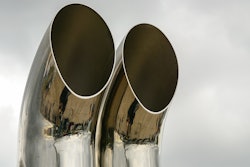The American Transportation Research Institute, the trucking industry’s not-for-profit research organization, released the results of a national survey characterizing the extent of idling and use of idle reduction technologies among trucking companies on Monday, Feb. 13.
In the report, “Idle Reduction Technology Fleet Preferences Survey,” trucking company views on several idling-related topics were explored. These topics included impacts of idling regulations and current and future planned use of idle reduction technologies. The survey participants provided data on more than 55,000 trucks. The results were unveiled in Tampa, Fla., at the 2005 Winter Leadership Meeting of the American Trucking Associations.
Participants already have spent more than $8.8 million equipping sleeper cabs with onboard idle reduction technologies. These technologies — which include direct-fired heaters, auxiliary power units/generator sets and battery-powered air conditioners — conserve fuel and reduce pollution by powering heaters, air conditioners and/or in-cab appliances while eliminating main engine idling. Throughout the next five years, participants are expected to spend an additional $56 million to further deploy these technologies.
According to the report, trucking companies appear to be investing more in idle reduction technologies. Users in general seem to be satisfied with the performance of these technologies, although costs appear to be higher than most are willing to pay. Nonetheless, the use of idle reduction technologies is expected to expand: When growth projections associated with the U.S. trucking industry are considered — including a 70 percent predicted increase in the volume of goods moved from 1998 to 2020 — the demand for idle reduction technologies should continue to increase well into the future.
See the report on ATRI’s website at www.atri-online.org.






